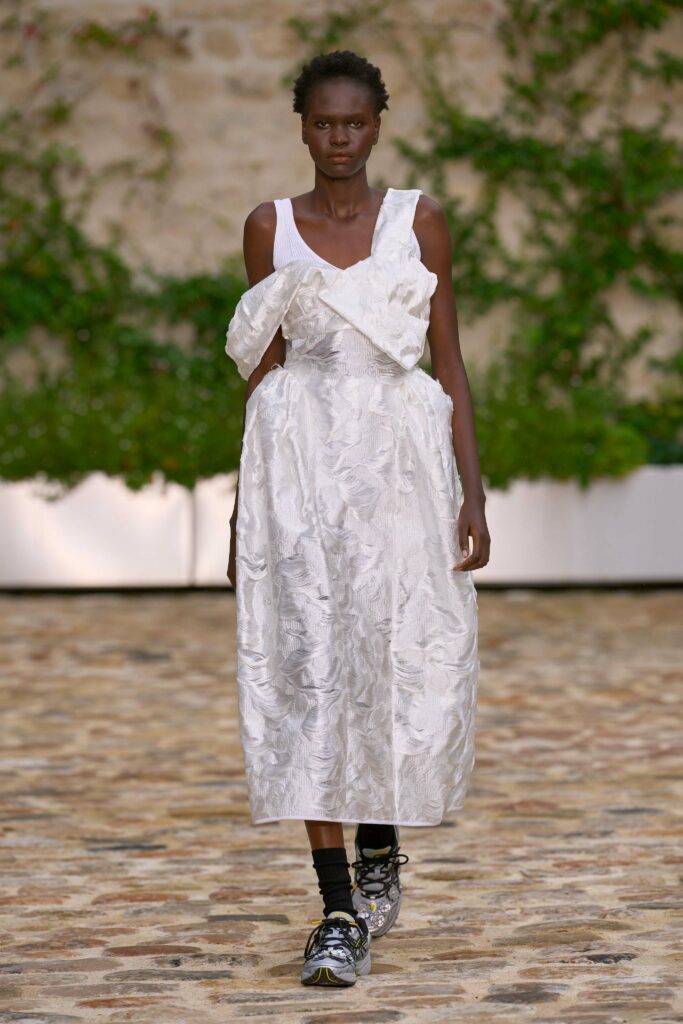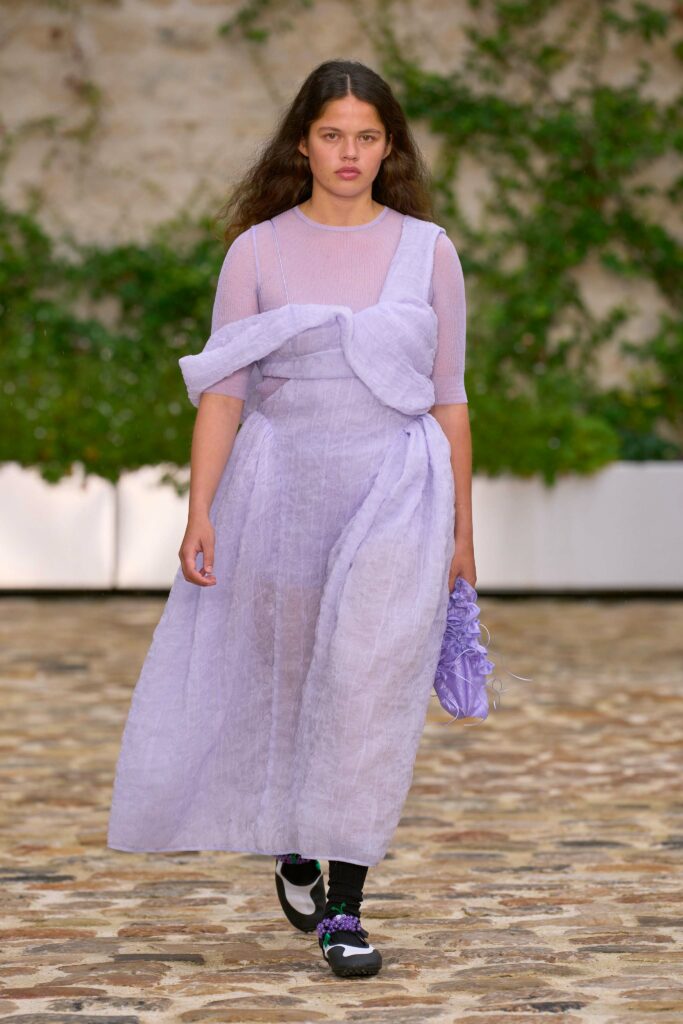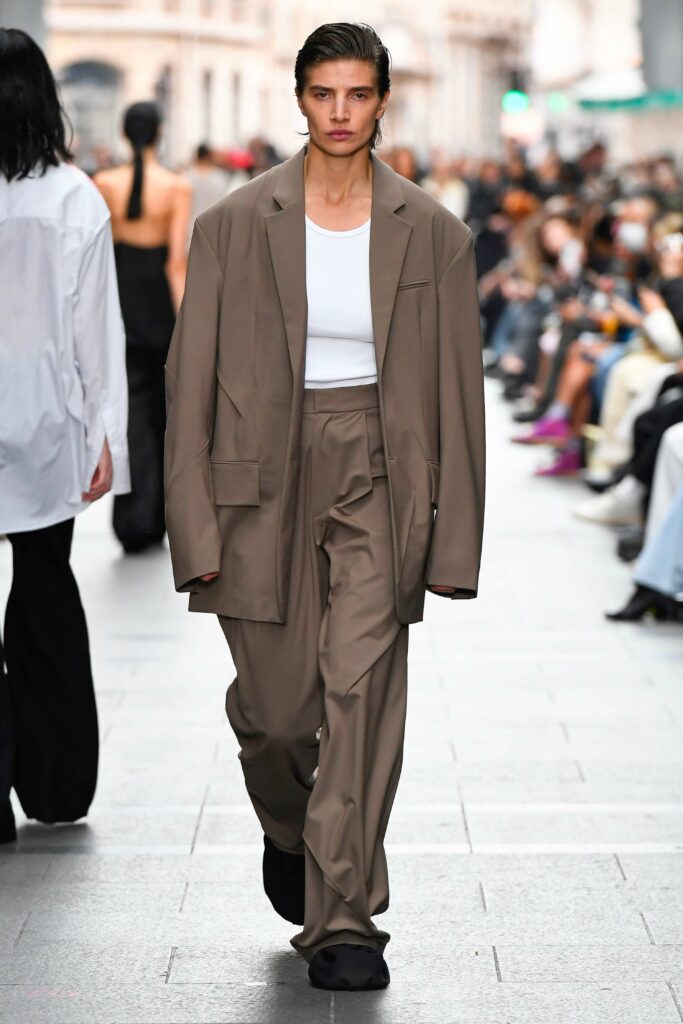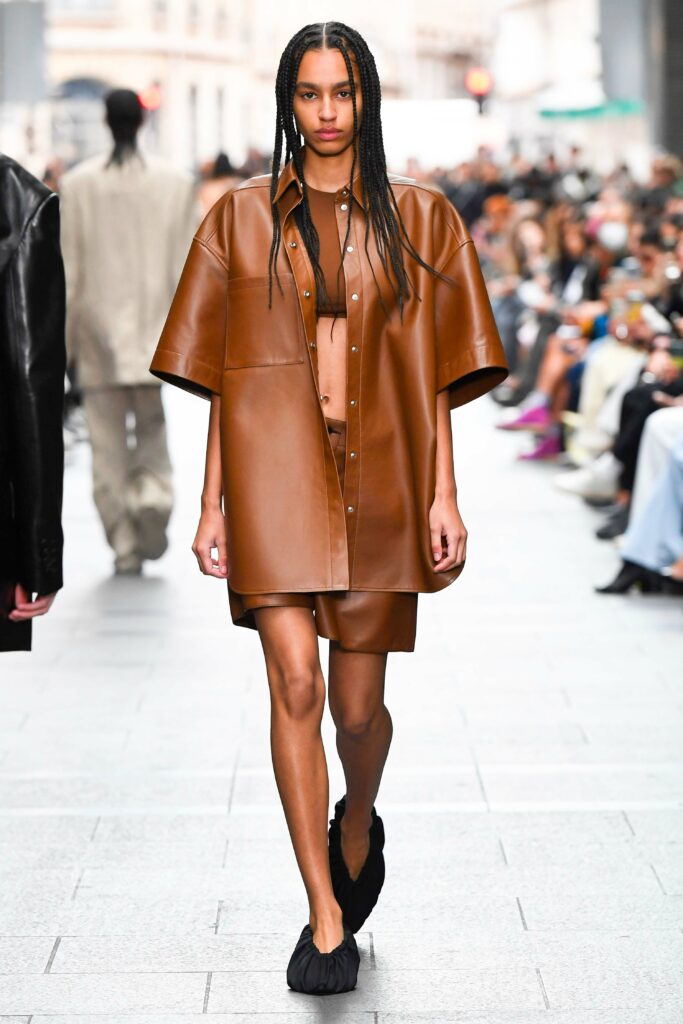Women Designers On the Rise at Paris Fashion Week®
A century-old parallel in Parisian fashion is unfolding this week. In the 1920s, French female designers such as Coco Chanel, Elsa Schiaparelli and Madeleine Vionnet broke significant sartorial boundaries, with each introducing a distinct, revolutionary vision regarding both creativity and commerciality. Chanel, with a matter-of-fact vision of workwear and a departure from the era’s earlier codes. Schiap, with fantastical surrealism. Vionnet, with the famed – and still oft-used – invention of the bias cut. In the 2020s – Spring-Summer 2023, to be exact – a notably high number of women are showing collections during Paris Fashion Week. Among the highest ever, in fact. Inevitably, this raises a question: Why is this noteworthy, after nearly 100 years? Shouldn’t equal gender representation (in all definitions of the term, which has expanded since the 1920s) be the norm by now? Especially in an industry that’s so inextricably aligned with the feminine? The hard truth is that men and women are not statistically equal in this business. That balance, though, may be shifting. Like the 1920s, the fashion focus of the 2020s is decidedly female.
In a recent report published by Business of Fashion, journalist Lauren Sherman wrote: “Women are rarely chosen for creative director roles at major brands.” There’s discomfort in considering this verisimilitude, yet the weathervane has moved in recent years, particularly with labels that show in Paris. Maria Grazia Chiuri, a woman, succeeded Raf Simons, a man, at Dior in 2016. Virginie Viard ascended the Chanel throne in 2019 after Karl Lagerfeld passed. Hermès has both Nadège Vanhee-Cybulski and Veronique Nichanian; Chloé has Gabriela Hearst. Lucie Meier makes up one half of the creative engine behind Jil Sander. Yet there have been pendulum swings in the opposite direction, too: Matthew Williams replaced Claire Waight Keller at Givenchy, as one example.
There isn’t – and there shouldn’t be – an exact formula as to who gets appointed where. That’s not what we’re saying. What’s important, though, is to acknowledge that amongst all brands – small indies to big houses – women are becoming more forceful, even favoured, and that the playing field may be inching towards levelling. At Paris Fashion Week this time around, the spotlight on this progress is shining bright.
“It’s incredibly special for me to be taking part in Paris Fashion Week this season in particular, which has one of the highest number of women ever showing,” says Victoria Beckham, who is bringing her eponymous label’s runway to the French capital for the first time. “I think we’re experiencing something of a renaissance right now, a kind of sartorial reset.” Beckham, who has held catwalks in London and New York, decided to come to Paris because the city is “at the epicentre of the industry.” “Showing in Paris offers a moment to reassert the [Victoria Beckham] values and core DNA.” Those pillars? Sleek, sophisticated, and confident, combining powerbroker and trendsetter, all with a clean and polished palette.
Beckham’s company is among a roster of internationally recognised, female-founded labels at Paris Fashion Week. Others are Stella McCartney, Marine Serre and new-to-the-event Zimmermann, by sisters Nicky and Simone Zimmermann. There’s a high quotient of names running (or co-running) smaller firms, too, such as Anna October, Paula Canovas del Vas, Florentina Leitner, Meryll Rogge, Di Du (DIDU), Rui Zhou (Rui), Cecilie Bahnsen, Anne Isabella, Marie Christine Statz (Gauchere), Ruohan Nie (Ruohan), Nix Lecourt Mansion (Lecourt Mansion) and Ester Manas.


Sherman also makes a strong point in her positioning about women putting their customers first. They are not designing fashion “fantasy,” per say; there’s a relatability that’s harder to render under the male gaze. This, in turn, has resulted in rising sales.
Manas, who co-designs her eponymous line with a man, Balthazar Delepierre, sees the benefit of synergistic creative application. “[Balthazar’s] vision is very helpful as he sees my body with different eyes than mind, and always helps me find the right amount of sensuality and seduction in my collections.” Delepierre adds: “With fashion being a painting of our current society, it was about time that female-led or co-led brands started multiplying. In my own experience, I would say that women may have a different vision of bodies and social dynamics, so it’s important for women to be at the forefront of fashion.” Plain and simple.
Lecourt Mansion, a transgender woman, feels that we should now be post-gender. She has a point. “I see great interest in my work but it’s actually about the fact that I am a transgender designer, instead of being a designer, period. I’m not here to make politics. I am here to make beautiful clothes. I think inclusivity is normal.”
The world of fashion business, though, still tips in male favour. But by levelling the balance, which we’re witnessing unfold in real time, especially on the Paris runways, we will hopefully get to a place where representation is both equalised and expanded.





